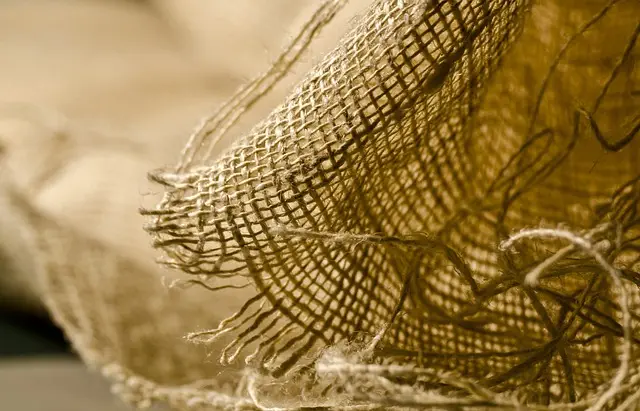Kratom, a plant from Southeast Asia, is recognized for its potential to alleviate muscle soreness through its active alkaloids mitragynine and 7-hydroxymitragynine, which engage with opioid receptors. Users often report that kratom helps with muscle relaxation and eases discomfort following physical activity. Certain strains like Maeng Da and Bali are particularly effective for this purpose. Kratom's anti-inflammatory effects are attributed to its influence on cytokine production, which plays a significant role in the immune response and inflammation management. However, it is essential to approach kratom use responsibly, considering both strain-specific efficacy and individual physiology. Given that muscle soreness can result from various causes, including potential underlying health issues, individuals are advised to seek medical advice before using kratom for muscle soreness relief. Kratom's anti-inflammatory mechanisms involve its alkaloids interacting with opioid receptors and regulating cytokines, which can help manage chronic inflammation conditions by preventing overactive inflammatory responses. Nevertheless, due to complex biological interactions and potential side effects, users should exercise caution and consult healthcare professionals before using kratom as a health intervention. Safe and effective use of kratom for muscle soreness relief requires adherence to recommended dosages, proper hydration, nutrition, and a holistic approach to wellness that includes rest, appropriate exercise, and professional medical guidance.
Muscle soreness is a common challenge for individuals engaged in physical activities, and its management remains a significant health concern. Kratom, a natural substance derived from Mitragyna speciosa, has emerged as a potential ally in achieving muscle soreness relief. This article delves into the mechanisms by which kratom exerts its anti-inflammatory effects, offering insights into its role in mitigating muscle soreness. Explore how kratom’s chemical composition contributes to its therapeutic properties and learn about the safe usage guidelines to maximize its benefits for muscle soreness relief. Join us as we unravel the science behind kratom and its potential in natural pain management.
- Understanding Kratom's Role in Mitigating Muscle Soreness
- The Science Behind Kratom and Its Anti-inflammatory Properties
- Safe Kratom Usage for Maximizing Muscle Soreness Relief
Understanding Kratom's Role in Mitigating Muscle Soreness

Kratom, a plant native to Southeast Asia, has garnered attention for its potential in alleviating muscle soreness. Its primary active compounds, mitragynine and 7-hydroxymitragynine, interact with the body’s opioid receptors, which may contribute to its analgesic properties. Users often report that kratom aids in muscle relaxation and reduces discomfort associated with physical exertion. The alkaloids present in kratom are believed to modulate pain signals and inflammatory responses within the body, offering muscle soreness relief with kratom that can be particularly beneficial for individuals engaged in regular physical activity or those recovering from injuries.
Research into kratom’s effects on muscle soreness is ongoing, but preliminary studies suggest that certain strains of kratom, such as the Maeng Da and Bali varieties, are more potent in this regard. The anti-inflammatory benefits of kratom are thought to be due to its influence on cytokine production, which plays a key role in the body’s immune response and inflammation regulation. Users experiencing muscle soreness may find relief by incorporating kratom into their wellness routine; however, it is crucial to approach its use with caution, adhering to recommended dosages, as the efficacy and safety of kratom can vary based on strain, dosage, and individual physiology. Additionally, due to the complexity of muscle soreness and the potential for underlying health conditions, consulting with a healthcare professional before relying on kratom for pain management is advisable.
The Science Behind Kratom and Its Anti-inflammatory Properties

Studies have elucidated the mechanisms by which kratom, a plant-based compound derived from Mitragyna speciosa, may exert its anti-inflammatory effects. The alkaloids present in kratom, principally mitraphylline and 7-hydroxymitragynine, are believed to play a pivotal role in modulating the body’s inflammatory response. These compounds interact with various receptors, including opioid receptors, which can reduce the perception of pain and alleviate muscle soreness relief with kratom. The anti-inflammatory properties are thought to stem from these interactions, which can inhibit specific signaling pathways that lead to inflammation. This action is not limited to centrally but also has local effects, potentially benefiting conditions characterized by tissue inflammation.
Furthermore, the anti-inflammatory efficacy of kratom is underpinned by its influence on cytokines, which are key players in the immune system’s response to injury or infection. By modulating the production and activity of these proteins, kratom may help mitigate the body’s overactive inflammatory reactions, a potential boon for those experiencing chronic inflammation-related muscle soreness relief with kratom can be sought through careful dosing and appropriate use. However, it is imperative to approach such remedies with caution, as the safety and efficacy of kratom are subject to ongoing research and regulatory considerations. Users should consult healthcare professionals before incorporating kratom into their health regimen, especially considering its complex interactions and potential side effects.
Safe Kratom Usage for Maximizing Muscle Soreness Relief

Muscle soreness is a common issue for individuals engaging in regular physical activity, whether for fitness, sports, or rehabilitation purposes. Kratom, a plant from Southeast Asia with alkaloid compounds, has been traditionally used to manage pain and may offer relief from muscle soreness. For those seeking muscle soreness relief with kratom, safe usage is paramount. The most effective strains for this purpose are typically the white vein varieties, such as White Borneo or White Maeng Da, which are known for their stimulating effects that can aid in recovery without causing sedation. It’s important to adhere to recommended dosages to avoid overconsumption, which could lead to unwanted side effects. Additionally, combining kratom with proper hydration and nutrition can enhance its efficacy in alleviating muscle soreness. Users should also be mindful of their overall health condition and consult with a healthcare professional before integrating kratom into their wellness routine, especially if they are taking other medications or have pre-existing health concerns. By following safe usage guidelines and understanding the potential benefits and limitations, individuals can harness kratom’s properties to aid in their muscle soreness relief efforts. Always prioritize a holistic approach that includes rest, exercise, and balanced dietary practices alongside the use of kratom for optimal results.
In summary, the article has explored the potential of kratom as a natural approach for muscle soreness relief. It has elucidated kratom’s role in mitigating discomfort and its scientifically-backed anti-inflammatory properties that may contribute to this effect. Emphasis was placed on safe usage practices to optimize the benefits of kratom while minimizing risks. For those experiencing persistent or severe muscle soreness, it is advisable to consult healthcare professionals before integrating kratom into their wellness regimen. Nonetheless, for many, kratom may offer a promising avenue for addressing muscle soreness without relying on conventional pharmaceuticals.






